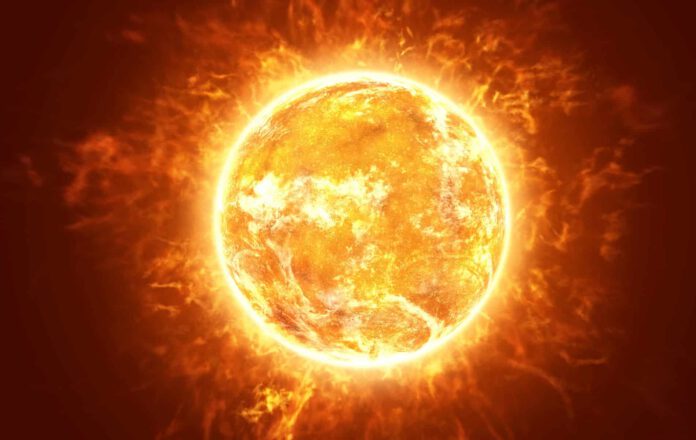
Sun’s Rhythmic Heartbeat Influenced by Planets
The sun exhibits a kind of heartbeat, not as stable as ours, but with a definite rhythm. However, we still know very little about what causes this heartbeat. Recent findings now confirm that there is a connection with the planets in our solar system.
The Eleven-Year Solar Cycle
The sun’s eleven-year cycle can probably be partly explained by the gravitational pull of the planets Venus, Earth, and Jupiter towards the sun. Other factors may also play a role, but the cycle of the planets aligns too precisely with the eleven-year solar cycle to be mere coincidence, according to German researchers led by Frank Stefani.
A Gigantic Dynamo
Solar activity is primarily generated internally, but external influences likely contribute as well. “You can compare it to a gigantic dynamo,” says Stefani. “The solar dynamo generates an activity cycle approximately every eleven years on its own, but we believe the planets’ gravity intermittently interferes, giving a small nudge, leading to the unusually stable rhythm of the sun.”
Pole Reversals
Every 11.07 years, the sun undergoes a spectacular transformation as its activity fluctuates. During the solar minimum, activity is at its lowest. This gradually increases in the following years, marked by an increase in sunspots and solar flares, until a peak known as the solar maximum is reached. We are currently approaching such a maximum again.
At the solar maximum, the poles of the sun reverse. Afterwards, activity gradually decreases until the minimum is reached, after which the cycle is repeated. This is also known as the Schwabe cycle, which repeats every eleven years with some variation in length.
Planetary Alignment
So, what do the planets have to do with this? Interestingly, every 11.07 years, around the solar minimum, Venus, Earth, and Jupiter align, increasing their gravitational pull towards the sun and causing a slight tug. This effect is weak and likely has no direct impact on the sun itself but may help in modulating the solar cycles and synchronizing the internal dynamo to produce a regular cycle.
Rossby Waves
Stefani and his colleagues have been investigating this potential link for some time and now believe they have found new evidence: enormous waves in the sun called Rossby waves, which were only recently discovered. These waves also exist on Earth, where they swirl in the atmosphere, creating cyclones by separating cold and warm air masses.
“We have found the underlying physical mechanism,” explains Stefani. “We know how much energy is needed to synchronize the dynamo, and we know that this energy can be transferred to the sun via Rossby waves.” He adds enthusiastically, “The great thing is that this not only explains the Schwabe cycle and the longer solar cycles but also the shorter Rieger cycles, which we hadn’t even considered before.” The Rieger cycles are periods of 150 to 160 days when solar flares become more or less active and can be linked to Rossby waves.
Mathematical Models
The researchers discovered that the alignment of Venus, Earth, and Jupiter not only coincides with the solar cycles but also that when two of the three planets align, there is enough gravitational force to activate the Rossby waves. Even more intriguingly, this planetary alignment coincides with the Rieger cycles.
The scientists used mathematical models to validate their findings and could simulate the Schwabe and Rieger cycles using planetary alignments. Moreover, their calculations showed that approximately every 193 years, the strength of the sun’s magnetic field fluctuates. This is known as the Suess-de Vries cycle, which occurs when the sun’s 19.86-year periodic motion around the solar system’s center of gravity aligns with the Hale cycle— a double Schwabe cycle of 22.14 years. This cycle also emerged from the mathematical models.
The sun is vast and complex, so the planets are only part of the story. However, the coincidences are too perfect to be mere chance, according to the researchers. “We can only be 100 percent certain with more data,” responds Stefani. “But the arguments supporting a process where the planets play a role are now very strong.”











